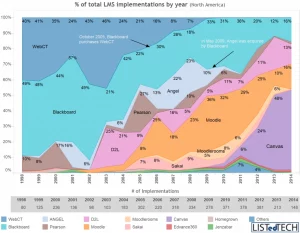Let’s start with a question: When was the last time you changed your mind? Or to put this more succinctly… when did someone last convince you that you were wrong and that you should be doing things differently, or even thinking about things differently?
Not very recently? That’s the response I receive most frequently.
After many years of working with management teams and individuals, I know how hard it is (sometimes impossible) to change another person’s mind. Yet by involving them and providing just the right balance of information – both rational and emotional – you can, on occasion, get them to reconsider. And finally, if you’re lucky, they may just decide to change their own mind, which is what’s needed for them to own and identify with that new position.
Let’s imagine, within a work environment, that you’re involved with changing certain procedures to improve efficiency, and that those colleagues who are impacted begin to follow these new ways. Now; ask yourself, why are they doing that? Perhaps:
- They don’t want to fall out with you
- They hope to get used to the new ways over time
- They know everyone else is making the change so they’d better tag along
- They have no other realistic option
- They have been thoroughly convinced by you of all the benefits of the change
Most likely, what’s really going on is a ‘change in their behaviour’, rather than a true ‘changing of their mind’. But just a moment, you may ask… could it be that I am only talking about the more awkward, obstinate people in a team? I don’t believe that to be the case.
I mean… consider the famous household cliché where each morning and night, you squeeze the toothpaste carefully from one end while your partner regularly squeezes in the middle of the tube, forcing the toothpaste to both ends. It’s usually (yes people have researched this) the one who squeezes from the end that tries to get the other person to change their mind – for ‘rational’ reasons. And maybe they will, and maybe they won‘t. The partner’s response could be, “Why get so upset about something so unimportant” or it may lead to quiet acquiescence just to avoid an argument, but the discussions don’t usually end with a genuine ‘changing of the minds’. Who would actually say: “Thank you for persuading me that you were right. To think… I’ve been making that mistake for all these years.”
For most of us, ‘change’ represents an intrusion in our lives. It represents an effort, and often implies that someone else is imposing something on us. But there are ways to improve communication and reduce resistance when instigating change – especially if we know more about our target audience. It can also be useful to reflect on our own attitudes when we have change imposed upon us.
The thing is, making decisions, particularly on more important topics, also says something externally about us… to the point that publicly changing our position can be seen as a sign of weakness, or a lack of fortitude – perhaps even raising the spectre of not having fully considered all aspects of a particular situation.
Those trying to change our opinions or impose new procedures often make things worse by hammering home the rational arguments which they think will be more than sufficient to convince all discussion partners that their position is right. Yet, paraphrasing the philosopher Karl Popper: “No rational argument will have a rational effect on someone who does not want to adopt a rational attitude.” The thing is, following your own logic doesn’t necessarily make you rational from the other person’s viewpoint.
In fact, the harder and more precise the rational argumentation becomes, the more we are also being told that our point of view – our own internal logic system – is wrong, implying that we are at least to a certain extent being irrational. Those trying to force through a decision or ‘change our minds’ don’t seem to realize that they are making it even more difficult for us to change our own position. We must, as the military proverb says, win over both hearts and minds.
It can be argued that part of the changemaker’s toolkit should include activities aimed at helping maintain the other person’s self-esteem, without losing face or feeling stupid? Particularly in times of change, we need reassurance – and that’s not easy.
That being said… is this all beginning to sound a bit too wishy-washy?
Let’s move away from business for a moment, and illustrate the point with a totally different ‘change’ situation – the thorny issue of the UK’s Brexit. Looking back, we can see how the question of staying in the EU or leaving the union became polarized. It became a battle between ‘us’ and ‘them’, with a narrative that cleverly positioned the ‘Remainers’ (pro-EU) as representing the ideology of the metropolitan elite and the ‘Brexiteers’ as those fighting to ‘win back freedom for the UK’. This was something that resonated with the majority of voters, while those advocating for ‘Remain’ kept coming back with more and more rational facts and figures to show how much the UK was going to suffer in a post-Brexit world. Those rational arguments, be they right or wrong, were never going to win over an electorate that felt only a small emotional bond with the EU.
In a nutshell, if you wanted Britain to leave the EU, the strength of your ‘emotional’ decision meant you would never change your mind for rational reasons. And no-one was providing relevant emotional reasons to stay tightly connected. Even today, with a growing number of British people agreeing that economically, Brexit has brought more problems than solutions, very few have changed their minds. They still believe – against all logic – that it was the right thing to do.
It may, for now, seem something of a stretch, but in the next of this short series, I will move on to demonstrate how successful change concerning the world of IT and school infrastructure is also dependent on a balance of rational and emotional issues. Then we will focus on the different thinking styles that you need to impact, to get the best results – a simple toolkit that should help facilitate and smooth along the process of change.





